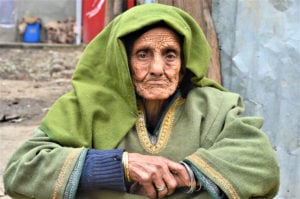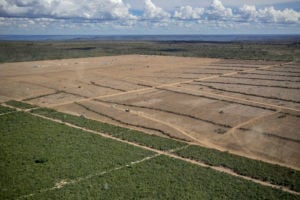Gautam Gupta loves bananas. The Delhi-based fashion designer always carries one in his car, “just in case a meal gets missed”. So, naturally, when the couturier decided to reduce his carbon footprint, he took the fruit out of his fruit bowl and put it onto the catwalk in the form of a sustainable luxury wedding collection crafted from banana fibre.
Gupta is not the only one picking up fibres that would otherwise go to waste. A growing number of Indian designers are using a veritable menu of food and agro-waste fibres to make clothing and accessories.
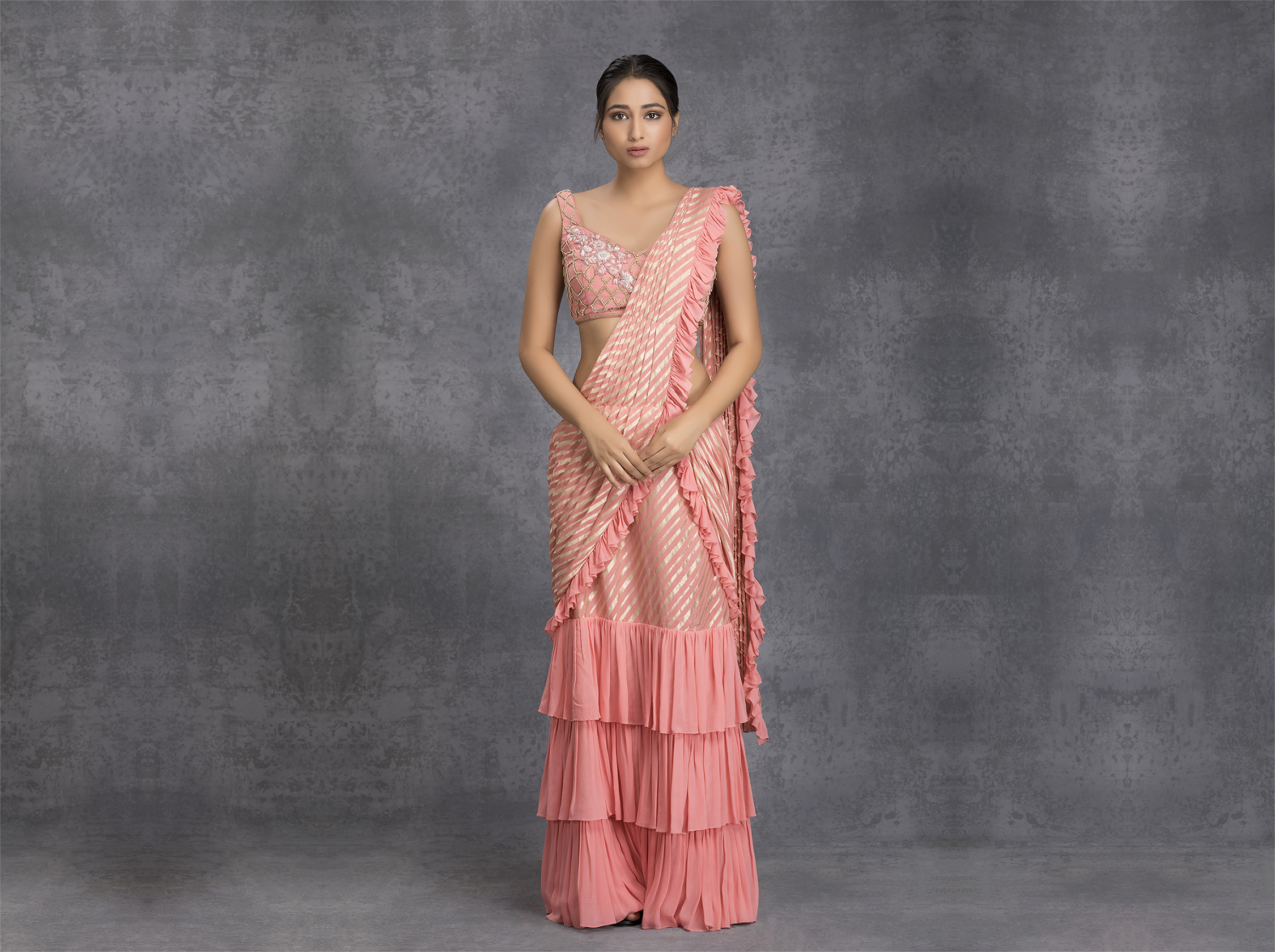
Orange peel, lotus stems, betel nut husks, rose petals, sugarcane, pineapples, coffee grounds, eucalyptus and even fish scales are no longer just food or waste. They are the fashion frontline in combatting climate change.
“A system where designer garments can be created using food waste could be a potent antidote to high fashion and fast fashion. It has four key benefits – pro-nature climate friendliness, water conservation, waste management and guilt-free fashion and lifestyle,” said Gupta.
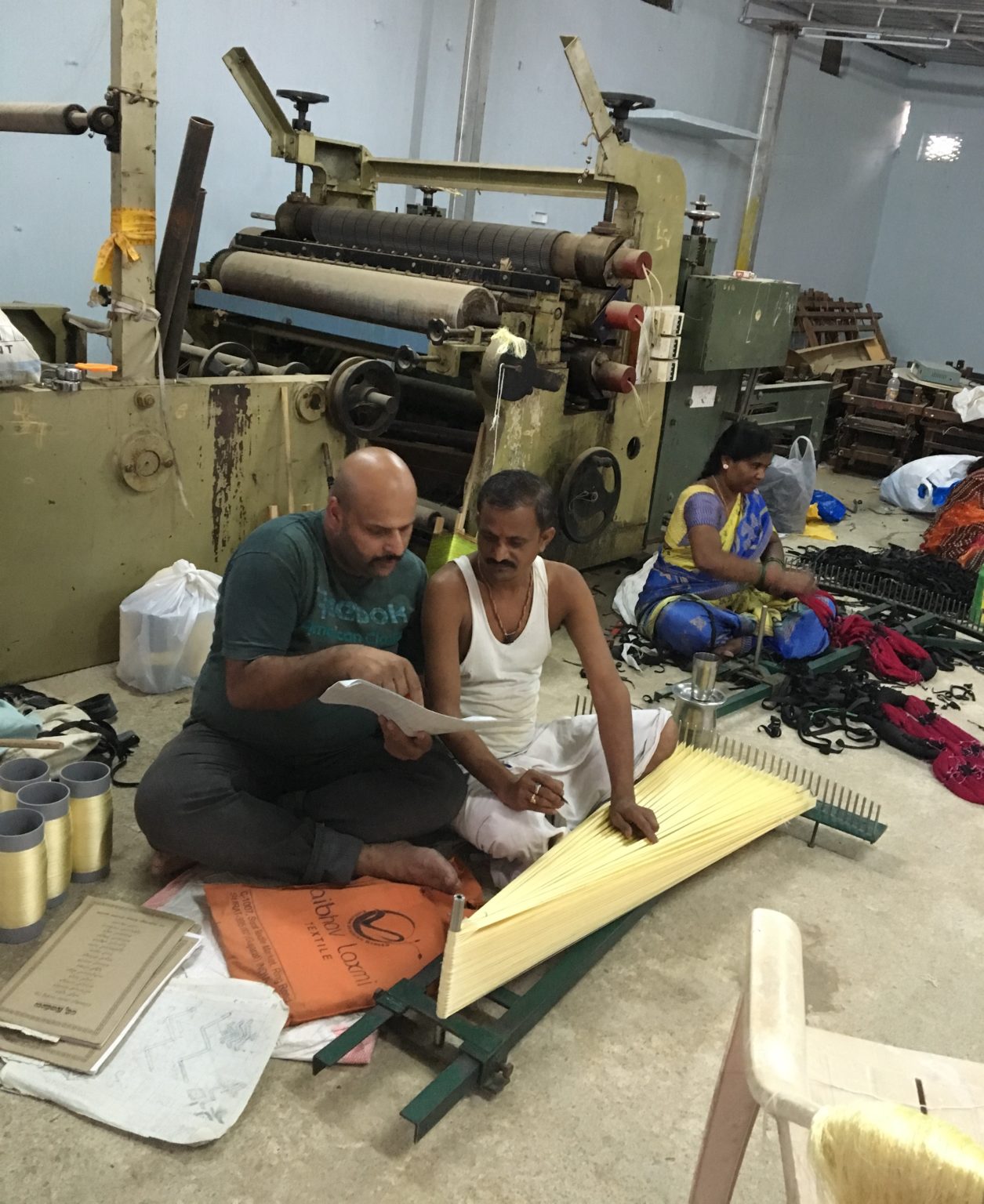
“The design fraternity needs to rigorously embrace these new materials and show that handcrafted, thoughtful clothing can be as interesting as energy-intensive fashion. It can have significant environmental benefits as it means working with nature and not against it, using materials that would otherwise aid greenhouse gas emissions, water wastage and propagate landfills,” agreed designer Madhurima Singh, who works with textiles made from eucalyptus, corn, lotus stems, and orange and pineapple waste.
Fashion is usually considered extravagant, superfluous and excessive. But this new trend could satisfy the desire for indulgence craved by upwardly mobile Indians with high disposable incomes, while reducing their planetary footprints.
From being wasteful to using waste
In a hot and humid country like India, where cotton dominates wardrobes, such efforts go a long way in conserving water and the environment. Producing 1 kilogramme of cotton in India consumes about 22,500 litres of water, according to research from the Water Footprint Network. Besides this, about 50% of all pesticides used in the country are in cotton production, causing pollution.
See: Bihar’s toxic textile industry
The UN Environment Programme has said that the fashion industry globally “is responsible for 20% of global wastewater, 10% of carbon emissions and huge amounts of waste. Every second, one garbage truck full of textiles is landfilled or incinerated.” The global green body says “about 60% of materials made into clothing is plastic, which includes polyester, acrylic, and nylon textiles” – synthetic fabrics that shed plastic microfibres into the water system when washed.
India is one of the biggest textile export and consumption markets worldwide. The domestic textiles and apparel market stood at an estimated USD 100 billion in the 2019 financial year, and the larger textiles sector contributed 2% to the country’s GDP, according to India’s federal commerce ministry.
Creating greener fashion
To create a greener fashion future, Mumbai-based accessory designer Mayura Davda uses discarded fish scales to make luxury handbags, wallets, mobile phones covers, laptop cases and iPad and tablet sleeves instead of leather, which is highly polluting. For vegetarians or those averse to fish, Davda offers a similar collection made from pineapple leaves, which mimic the touch and feel of leather.

Annually, 1.6 billion tonnes of food goes to waste across the globe, with a carbon footprint estimated at “3.3 billion tonnes of CO2 equivalent of GHG”, according to the UN Food and Agriculture Organization.
Sayesha Sachdev is a Bengaluru-based designer who works with eucalyptus, lotus, orange and rose petal fibres. “The volume of food and agro-waste and its adverse environmental impact nudges us to stand up and become climate-conscious. You can now become part of a powerful movement to reduce the effects of climate change through collective action,” she said.
“Conventionally, owning an apparel business meant maximising profits and sustainable ventures were equated with hobbies,” Davda said. “But growing climate-consciousness among consumers and designers has converted it into a serious business opportunity. It is encouraging fashion entrepreneurs to adopt the triple bottom line approach, which encompasses making a profit while taking care of society and the environment.”
R.S. Balagurunathan, the owner of Anandi Enterprises in Tiruppur, Tamil Nadu, agreed, adding that in the past year demand for Anandi’s textiles made from food and agro-waste has grown sixfold. Anandi Enterprises makes fibres from banana, aloe vera and areca nuts among others. “Not to forget,” Balagurunathan said, “being eco-friendly enhances labels’ brand equity.”
Shalini Das, a Mumbai-based travel blogger, said, “When I buy ethical fabrics, it is an investment that I make not just to look good but also to conserve the environment.”

The science behind the ethics
How exactly are green fabrics made? One example is lotus stems, which are carefully sliced and fibres pulled out from the centre. Next they are processed using natural enzymes, and then knotted into yarn. Similarly, banana stems and peels are soaked for few days to separate the fibres. Thin threadlike fibres are then extracted, dried, processed, tied into yarn and woven into fabric. Both designers and manufacturers say that no matter how simple it may sound, the process is tedious, time-consuming and requires precision.
Balagurunathan said that besides their eco appeal, the fibres’ unique properties make them attractive. For instance, fabric made from banana fibre is both strong and high on moisture absorption, aloe vera is hypoallergenic and bamboo is antibacterial.
Oinam Roselyn Devi, a research scholar in the Department of Apparel and Textile Science at Punjab Agricultural University who studies food and agro-waste fabrics, said, “Several food and agro-wastes have unique properties… if fibres are mechanically extracted using water rating methods [soaked in water], fabrics manufactured from these fibres continue to possess and display unique properties of the food or plant, like orange peel is antimicrobial.”
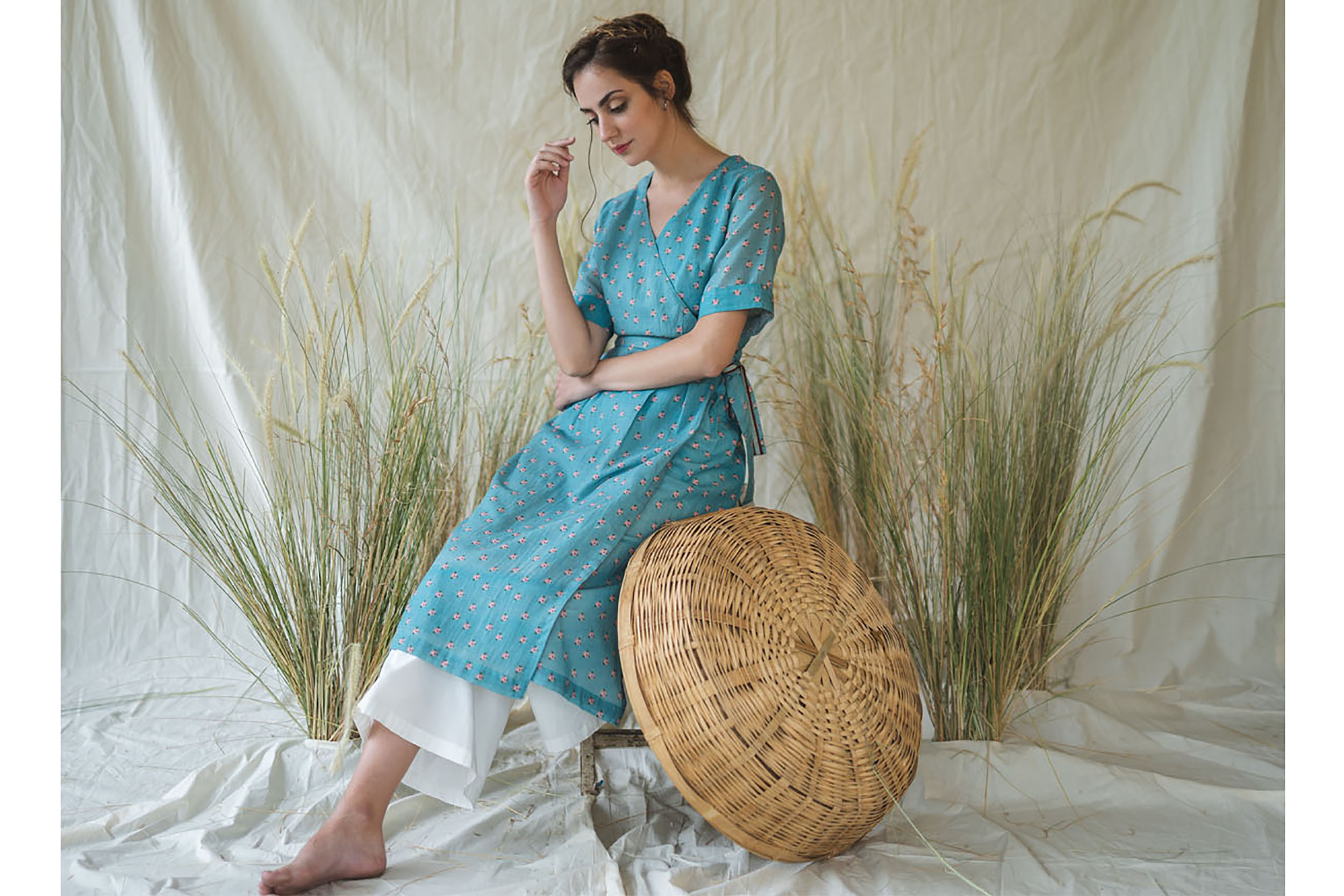
Net positive for farmers, designers and the environment
Shikha Shah is founder and CEO of Ahmedabad-based AltMat, a company that converts agro-waste from banana, hemp and nettles into textiles. She said that converting agro-waste into fabrics benefits the farmers as well as the environment, as it “enhances livelihood opportunities in rural areas for farmers by giving them extra income who otherwise burn the agro-waste and harm the environment unintentionally.”
Kaushik Varadan, owner of Raydan, a Mumbai-based textile firm that specialises in sustainable fabrics, agreed. “For example, once banana fruits are harvested, farmers either cut down the trees or burn them (each individual banana pseudostem flowers just once). Firms procure waste stems from farmers and extract fibres to make yarn.”
Raydan’s rose fibre is made from waste stems and leaves pruned by flower growers to expedite flowering, while aloe vera fibre is made from waste rind, which is discarded after a plant’s juice and gel have been removed.
“Manufacturing these yarns requires one-sixth of the water used in making cotton yarns. Since we use agro-waste and don’t cultivate it for producing yarns, we can argue that these are zero-water-footprint raw materials,” Shah of AltMat claimed.
Varadan said that since any waste generated is largely agro-waste, the post-production residues are biodegradable, and at times reused in the next production cycle. By comparison, he said, cotton and synthetic fabric waste have no reuse value. And making agro-waste fabrics consumes almost 50% less water than cotton and synthetics, because of the fibres’ high natural moisture content, he explained.
“Chemical dyeing of cotton or synthetic fabrics is a multi-stage process – desizing, scouring, mercerizing, bleaching, dyeing and printing – and each step requires water. However, agro-waste fibres are mostly dyed with vegetable dyes, which involves a single step: dipping the fabric in dye and drying it, which saves gallons of water. And the waste water left works like natural liquid fertiliser for gardens and plantations,” said Neetu Singh, owner of Compact Buying Services, a Faridabad-based sustainable garment manufacturer.

In comparison, to produce one tonne of rawhide about 15,000-40,000 litres of water is used. Toxins like chromium and sulfide are released during the process, according to a 2015 research paper on tanneries in Tamil Nadu.
The good news for these innovators is that business is picking up. Varadan of Raydan said that “in the past two years, we have seen demand growth of 35% for fabrics made of food and agro-waste.”
Much of this goes abroad, or to high-end designers. Raydan produces around 144,000 metres of agro-waste fabric annually, of which almost 40% is exported. Around 20% is bought by Indian designers and the rest by fabric wholesalers.
It is this last group, the wholesalers, who will be the most interested if demand for such fabrics continues to swell – and wearing clothes made from bananas becomes as common as eating the fruit.

